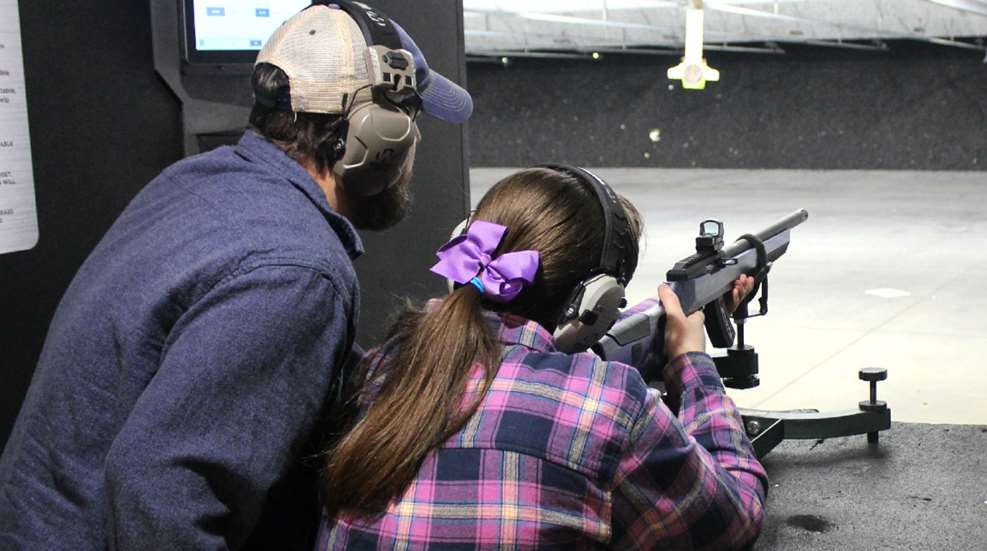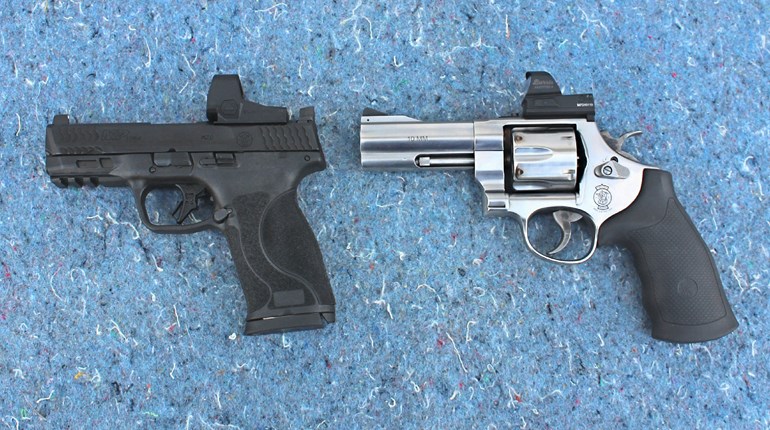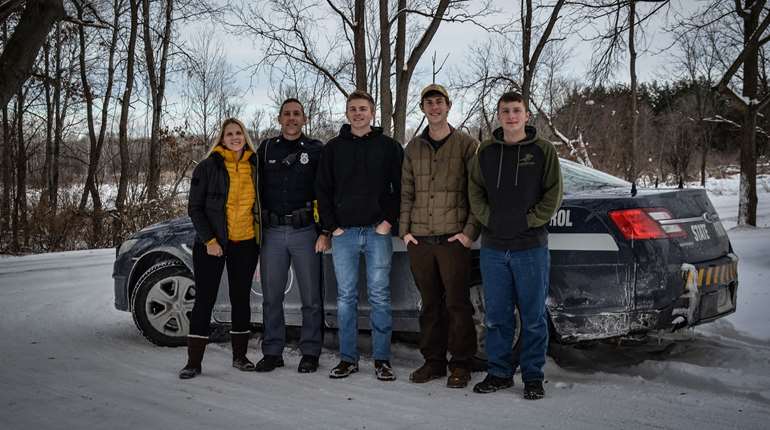
There's an old chestnut of shooting sports wisdom that crops up from time to time that goes something like this: The only gun safety mechanism you can rely on to work properly is the one installed between your ears. Before safe gun operations can happen in our hands, they have to happen in our minds. I bring this up here because I believe that at the root of “gun proofing” our children is providing information and instructions that give them both the desire and the means to behave safely with and around firearms.
Each family is unique. Some parents were raised with shooting sports and traditions that have been handed down for generations. Others are just now learning about firearms safety as they make use of their Second Amendment rights. Kids are different as well. They mature at different rates and vary in temperament. Some require a strong emotional appeal for important principles to sink in while others need to delve into the details to gain a more logical understanding.
I am not here to tell you how to parent, when kids should start shooting or how to go about motivating them to follow safe gun handling practices. That's your job. Instead, I want to share some practices and principles my wife and I have found useful while raising our family around various shooting endeavors. Think of this as a handful of tools to add to the toolbox. Some of them might not be the best fit depending on where your family is along its shooting sports journey while others just might come in handy.
Taking the Fun out of Forbidden Fruit
There is nothing like “forbidden fruit” to inspire youngsters to sneak around, act deceptively and take risks by shimmying up to high shelves to sate their curiosity regarding that mysterious taboo something they’ve been told to never, ever touch! Whether it’s a book, an unmarked box or some long and heavy object wrapped in an old blanket, it must be something truly wonderful if Mom or Dad are so intent on keeping it out of reach. Some inquisitive youths will try to discover the secret on their own while others will tackle the problem by forming a Mission Impossible team with siblings or friends.
A crucial part of protecting curious children from themselves is employing safe gun-storage practices. The subject is covered in this Kid Proof Your Guns article. The other facet, which is just as important, if not more so, is inspiring kids to avoid unauthorized access of firearms in the home.
A strategy that has worked well for us has been the “Familiarity Breeds Boredom” approach. It goes something like this: Hey kiddo, what's up? You want to look at one of the guns? Sure, I've got some time so let’s take one out of the safe for a closer look.
But before we do that, let's agree on a safe direction for the muzzle. That basement wall, which is backed by several yards of earth, will do the trick. Why do we need a safe direction? Because we always treat a gun as if it is loaded even when we know it isn't. That means keeping it pointed in a safe direction, and for now it's that wall right over there. The gun is going to point that way the whole time we are looking at it. Now step out into the hall for a minute while I open the safe (close the door and retrieve the gun). OK, you can come back in.
Now, I'm going to hold this gun while you and I verify that it is completely unloaded and there is no ammunition in it at all (the parent already conducted a chamber check as the gun was coming out of the safe, so this is a repeat of the procedure). Let's open up the action and verify the chamber is clear by looking and touching. Do you agree this gun is unloaded? Yep, I do too. Let’s talk about its parts and what they do (time passes).
Oh, you want to hold it now? Well, let’s hold it together. Remember, keep it pointed at that wall and do not touch the trigger at all. We are not at the range and we’re not shooting today so there’s no reason to touch the trigger, right? Got it shouldered? How does that feel? It’s kind of heavy, isn’t it? OK, it's my turn to hold it by myself again.
So, do you remember what kind of rifle action this is? It's a lever-action. And do you remember what caliber it is? It's chambered for .22 Long Rifle. And how do you use the sights? That's right, the front sight must line up with the rear sight. That's called forming a sight picture. In fact, I really like the sights on this gun because that green fiber-optic up front is nice and bright in natural light. And even on cloudy days ... what's that kiddo? You’re ready to be done for now? Really, so soon? You want to go play? OK, that's fine. I'll see you later then (and the rifle goes back into the safe).
In short, action movies with actors jumping out of helicopters with guns a-blazing are exciting. Going to the shooting range to punch holes in targets, or out to the farm to knock over soup cans, is a fun family activity. But guns at home are, well, just kind of boring. There’s nothing mysterious about them because they can be looked at and discussed with appropriate adult supervision. But listening to Dad drone on about the differences between single-stage and two-stage triggers is a real yawn fest. And helping Mom to scrub out the bore of a .22 rifle after a plinking session is about as thrilling as washing dishes.
Thus, the enticing forbidden fruit has turned out to be nothing more than another head of broccoli. So, the kids would rather exercise their curiosity in some other pursuit. Some day they will appreciate that the shooting sports broccoli Mom and Dad served up was good for them. But by then they’ll be old enough to purchase rifles of their own.
Team Mentoring
For reasons I don't fully understand (and my parents didn't either) there are some subjects of conversation that are more readily received when the mentor disseminating the information is someone other than Mom or Dad. When I was growing up, that mentor was my father's brother, Uncle Jerry. When the extended family gathered for a few days of deer hunting together, Jerry rounded up the younger cousins, sat us down and laid down the law regarding gun safety and shooting practices when in camp. He was stern, firm, but fair, so we listened to what he had to say.
As my siblings and I have had families of our own, we've taken turns being “Uncle Jerry” for each other. Many of the cousins are adults now. But when they were younger, we used to come together on Thanksgiving weekends for a family target shooting behind my brother's property. We took turns working with each other's kids. Having an Auntie, an Uncle or a favorite family friend spend time with them, teaching safety rules and giving pointers is more enjoyable and interesting than just another lecture from the parents.
Formal Training Programs & Organized Shooting Activities
In addition to parents and family mentors, organized instruction and activities can be a great way to teach the basics, learn techniques, answer questions and make new friends in the shooting sports community. These programs help kids to know that there's nothing weird or strange about being a gun owner in the United States. Many people choose to exercise their 2nd Amendment rights and do so responsibly.
The NRA supports a variety of youth-oriented programs, including the Eddie Eagle program, which teaches younger children what to do in case they find an unsecured firearm. Local shooting ranges often offer in-house instruction while providing facilities for state required hunter's safety training, Boy Scouts of America and National 4-H Shooting Sports endeavors. These programs can provide youth with a much-needed sense of accomplishment. It feels great to see them smile when they bring home a merit badge, certificate or license that they earned for themselves.
The Rules
Let's wrap up this conversation with the NRA's three Gun Safety Rules. Everyone who handles a firearm should know by heart and be able to repeat them from memory. Remember, the most reliable safety measures are located between our ears:
- ALWAYS Keep the Gun Pointed In A Safe Direction
- ALWAYS Keep Your Finger Off the Trigger Until Ready to Shoot
- ALWAYS Keep the Gun Unloaded Until Ready To Use















































